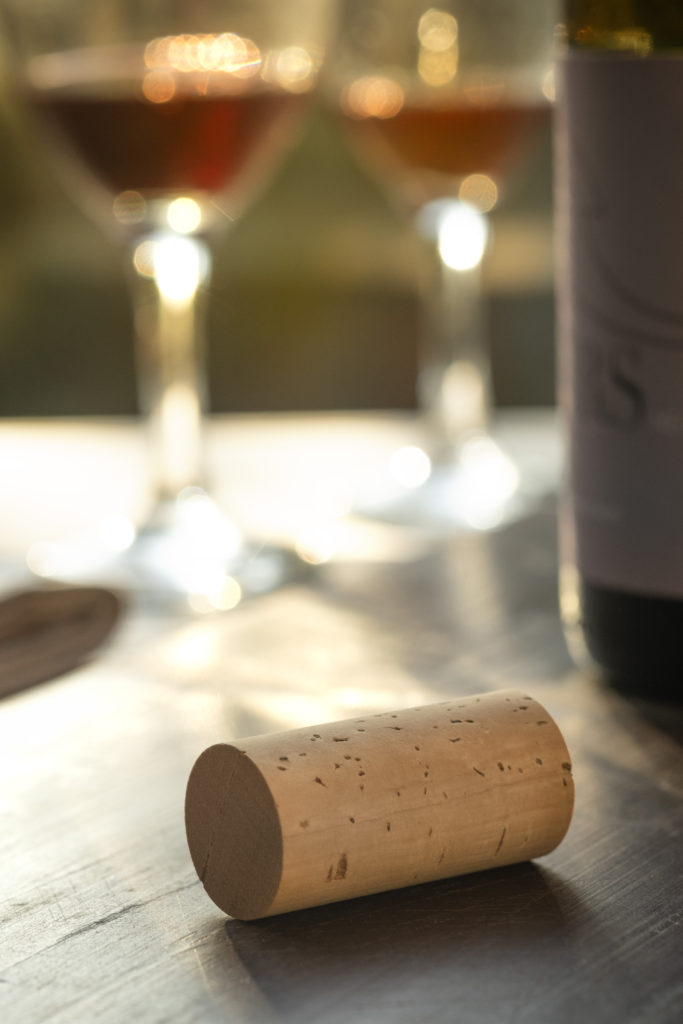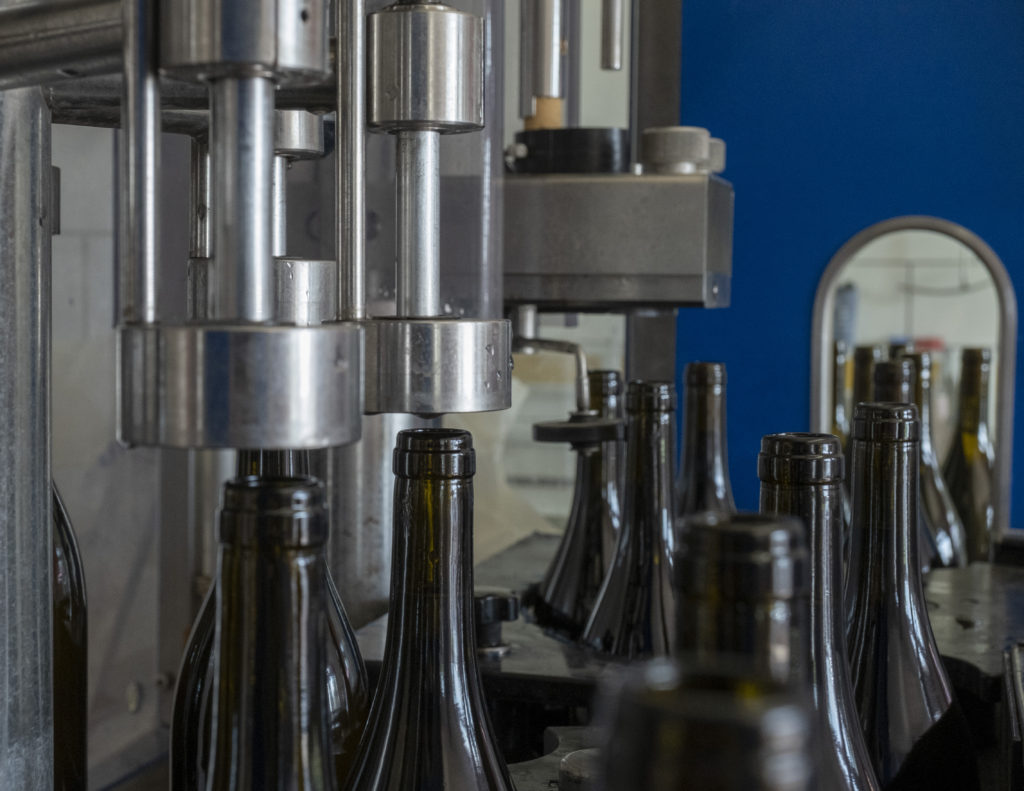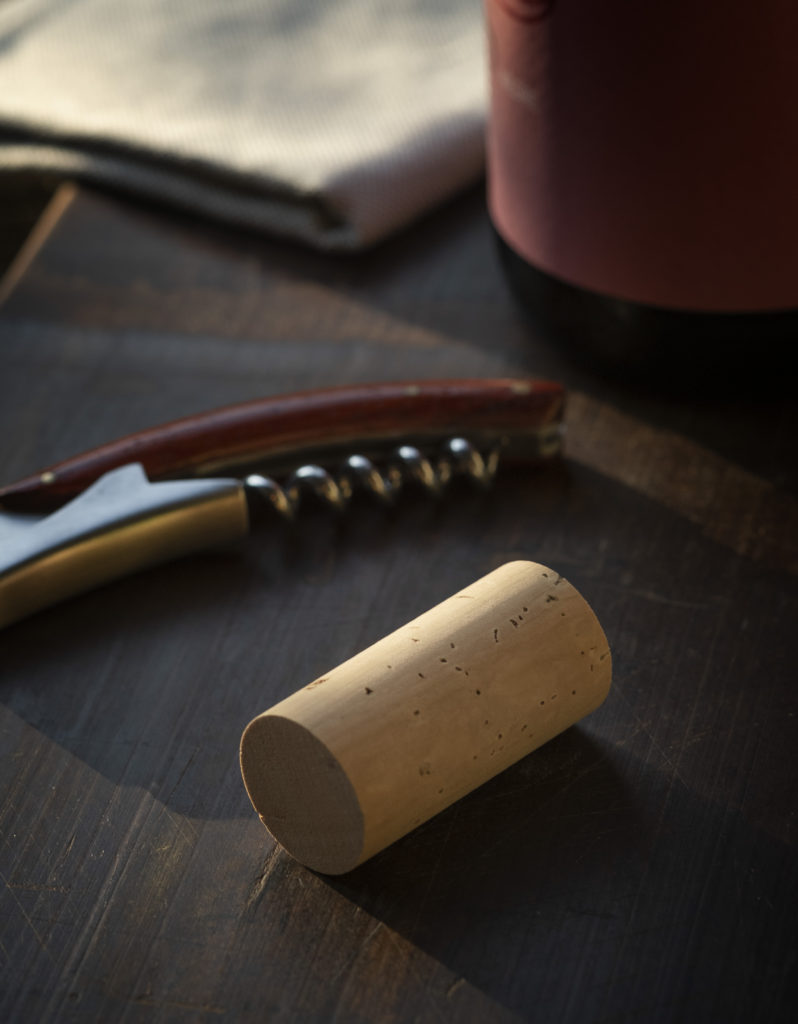CORK, WINE’S BEST FRIEND
Myths and frequently asked questions
THE CORK
What is cork?
Cork is the outer bark of the cork oak (Quercus Suber L), an endemic tree of the Mediterranean basin that occupies more than two million hectares throughout the world. It is also the name by which the cork oak is known. The cork oak is a very long-lived tree and its productive life lasts between 150 and 200 years. Thanks to its regenerative capacity, the bark can be removed at intervals of between 9 and 14 years.
Where does cork come from?
Cork is extracted from the trunk of the cork oak without causing damage to the tree. The cork oak only grows in areas where there is a Mediterranean climate, so extraction of the bark is practiced in the Western Mediterranean and especially in the Iberian Peninsula. In Spain, cork is produced mainly in Extremadura, Andalusia and Catalonia.
CORK OAK
What is a cork oak?
The cork oak (or Quercus Suber L) is a perennial tree of the Fagaceae family native to the Western Mediterranean. Its outer bark is cork, which has favoured the exploitation of cork oak forests.
Why is the cork oak called Quercus Suber L?
It is so named because the cork oak is part of the oak family (Quercus) and is a subspecies (suber). The final “L” corresponds to the initial of “Lineus”, who was the botanist who first identified the species.
How long does it last the productive life of a cork oak?
It lastsbetween 170 and 250 years.
How and where do cork oaks grow?
Cork oaks grow at an altitude between 0 and 800 meters above sea level and rarely appear at higher altitudes. They require a mild oceanic climate, with average annual rainfall between 600 and 1000 mm, with average annual temperatures around 15 ° C and a relative humidity between 65 and 80%.
What is the largest and oldest cork oak in the world?
The largest and oldest cork oak in the world is called “o Sobreiro Assobiador” (the “whistler”), it is found in Portugal and was planted in 1783. This tree is 16 meters high and it takes at least 5 people to surround it.
What is cork extraction?
The process of extracting the outer bark of the cork oak which, if done correctly, is carried out without causing any damage to the tree. It generally takes place between the months of June and August, depending on the weather. It is mainly a manual process, although lately machines have been designed to facilitate the extraction process.
When does the first cork harvesting take place?
The first harvesting takes place when the cork oak is between 35 and 40 years old, it is practiced only if the trunk has a minimum diameter of between 65 and 70 centimeters Guía de Recomendaciones y Medidas de adaptación al cambio climático en la gestión de Quercus Suber” , Life Suber / ORDER project of May 11, 1988, on the regulation of obtaining cork and the improvement of cork oak forests of the Department of Agriculture, Livestock and Fisheries of the Generalitat of Catalonia).
Do you have to cut down the tree to extract the cork?
Never! Only the outer bark of the cork oak is removed, but the tree does not suffer any damage and it regenerates itself, so a cork tree can be stripped at least 10 times throughout its life.
Why is cork removal one of the highest paying agricultural jobs?
Because of the specialization. The removal of the cork requires a good level of expertise in order to extract the outer bark of the cork oak correctly and without damaging the tree. It is a job that is concentrated in certain months of the year, it is physically demanding and not all people who do forestry work have the knowledge and experience to do it.
Did you know that there are no two equal cork oaks?
As cork is a natural material, each cork slab that is extracted from the trees is different and has a unique thickness and porosity.
What is suberculture?
The word suberculture refers to the sustainable management and use of cork oaks as well as the set of techniques and knowledge to practice their cultivation through rational use. The digital repository of documents of the Autonomous University of Barcelona contains an extensive directory that contents bibliography related to suberculture.
Besides cork, what other activities make cork oak forests viable?
There are several forestry, agronomic and hunting activities that are viable in the cork oak forests. Examples are the harvesting of plants and mushrooms, livestock, ornithology, ecotourism or hunting.
Why are cork oak forests natural firebreaks?
The cork oak is a forest typical of the Mediterranean, therefore it is adapted to dry summers and possible forest fires thanks to its outer bark, cork.
Cork is a natural fire-retardant shelter; this means that when there is a fire, the cork bark burns superficially but inside the plant is still alive. Unlike other types of forests, a burned cork oak can be inhabited within a few years of being burned.
Cork is a natural fire-retardant shelter; this means that when there is a fire, the cork bark burns superficially but inside the plant is still alive. Unlike other types of forests, a burned cork oak can be inhabited within a few years of being burned.
How important are cork oaks?
The cork oak forest contributes to the preservation of biodiversity and the survival of many species of native fauna, some in danger of extinction such as the Iberian lynx, which is the species of feline that is most at risk of disappearing in the world. They are also a sink for CO2, have high resistance to fire, contribute to sustainable forest use, offer a natural, recyclable and renewable product such as cork, contribute to the promotion of the circular economy and are a barrier against desertification.
How important are the cork oak forests for the preservation of the species?
Cork oak forests are one of the 35 richest global ecosystems in the world for the conservation of biodiversity, being equated to the Amazon, the island of Borneo or the African Savannah. There are 135 species of plants, 42 birds, almost 40 different mammals and more than 20 species of reptiles and amphibians. They have innumerable environmental benefits such as the regulation of the hydrological cycle, soil conservation or fire prevention (Source: Cork Initiative).
THE CORK STOPPER
How many corks are obtained from each tree?
Between 40 and 60 kilos of cork are extracted each time (Cork Information Bureau | 2019). Of these, 80% would be prepared cork and for each kilo of this prepared cork, approximately 62 stoppers come out.
How many stoppers can be made with a ton of cork?
With one ton of raw cork, an average of 49,000 stoppers can be made (Source: Systecode 2020), although the quantity varies depending on the quality of the cork and any defects that may exist.
Can you make natural stoppers from first-extraction cork?
No, the bark will not be optimal to make natural stoppers until the third cork extraction from the tree, as it would not have the necessary mechanical properties to be able to carry out its function: to cover and seal bottles without leaks.
What is the price of a cork stopper?
This depends on the type of stopper. The most difficult stoppers to make and which require a higher quality of cork are the extra quality natural cork stoppers. The price is around one euro per unit.
The agglomerated stoppers, on the other hand, come from a more industrialized process; they take advantage of the leftovers from making natural cork stoppers. These caps are cheaper and can be found from 20 euro cents per cap.
The agglomerated stoppers, on the other hand, come from a more industrialized process; they take advantage of the leftovers from making natural cork stoppers. These caps are cheaper and can be found from 20 euro cents per cap.
Is it possible to improve the quality of cork stoppers?
The cork sector has made an enormous effort to satisfy the expectations of the best wineries in the world. In fact, cork stoppers are the only ones that are conform to UNE and ISO standards. There is a specific quality certification for the cork industry (Systecode) and millions of euros have been invested in research, and also in the search in the improvement and quality assurance of stoppers from a sensory and physical perspective.
Can cork stoppers be recycled?
Yes. Cork stoppers are fully recyclable, biodegradable and reusable. Although new caps cannot be made, other applications can be found in areas such as construction, design, fashion, cosmetics and gardening. Currently, cork stoppers are managed as compostable organic material (brown container) but there are appearing more and more initiatives for their recycling.
Where can cork stoppers be recycled?
Currently the cork stoppers are managed through the brown container for composting. The Catalan Cork Institute Foundation works to develop a system for the recovery and recycling of caps to be used in the construction and maintenance of urban spaces (playgrounds and tree pots).
Can I choose wines sealed with proximity cork?
Yes, a clear example is the Taps de Finca initiative (“Estate cork stoppers”) promoted by the Regulatory Council of the Empordà Designation of Origin and the Catalan Cork Institute Foundation, with the support of AECORK. The Taps de Finca brand identifies corks and bottles that have been covered with local cork stoppers.
This seal is adopted by the wineries participating in the project and which have bottled their wines with cork stoppers made with cork extracted from cork oaks located in the same Empordà wineries or on farms located in the territory of the DO. In addition, all the estate cork stoppers have been made by Catalan cork companies.
We can identify the wines sealed with Tap de Finca because we find its logo on the label and the cap. Check out the companies that are part of Taps de Finca.
This seal is adopted by the wineries participating in the project and which have bottled their wines with cork stoppers made with cork extracted from cork oaks located in the same Empordà wineries or on farms located in the territory of the DO. In addition, all the estate cork stoppers have been made by Catalan cork companies.
We can identify the wines sealed with Tap de Finca because we find its logo on the label and the cap. Check out the companies that are part of Taps de Finca.
What does the drawing on the base of the cava stopper mean?
If the cork stopper has a four-pointed star, the cava has been made using the champagnoise method. If it is rectangular in shape, the sparkling wine has been fermented directly in the bottle. If the shape is circular, it is ‘Granvas’, the name given to sparkling wine whose second fermentation has been carried out in a hermetically sealed tank, for at least three weeks, and which is subsequently transferred to bottles for marketing. Finally, if the stopper has an equilateral triangle, it is a sparkling wine, of medium quality and to which carbon dioxide has been artificially added.
CURIOSITIES
Who invented the cork stopper?
The generalization of the use of stoppers in bottles is usually attributed to the monk Dom Pérignon, but the truth is that the English were already using them long before the French. Since the late sixteenth century, all Shakespearean wines came to England in barrels from France, and the English bottled them themselves with cork stoppers from Spain and France (Champagne, cava and other sparkling wines, Tom Stevenson ).
What is the origin of cork stoppers?
We know that since the 5th century BC the Greeks used amphoras sealed with cork to store wine. Some of these ancient amphoras have been found at the bottom of the Mediterranean Sea and it has been possible to verify from the Institut Català del Suro Foundation and by means of electron microscopy that, despite aging due to the effect of water, the cork maintained its properties and cellular structure.
However, the exponential use of cork stoppers is related to the beginning of the marketing of bottled wine in the 17th century. It is known that around the year 1800, Arxer, a cork maker from Sant Feliu de Guíxols, had an annual production of wine corks in the order of millions and champagne corks in the order of hundreds of thousands.
However, the exponential use of cork stoppers is related to the beginning of the marketing of bottled wine in the 17th century. It is known that around the year 1800, Arxer, a cork maker from Sant Feliu de Guíxols, had an annual production of wine corks in the order of millions and champagne corks in the order of hundreds of thousands.
Why does cork exploitation benefit rural areas?
Because the economic activity associated with harvesting, the maintenance of forests and the manufacture of cork stoppers, employment is created around them, both in terms of the direct exploitation of cork and the activities derived from the cork oak forest such as hunting, farming or herding.
In addition, the second transformation of cork requires qualified workers, experts in chromatography, additive manufacturing, microbiology, electronics, etc.
In addition, the second transformation of cork requires qualified workers, experts in chromatography, additive manufacturing, microbiology, electronics, etc.
Did you know that cork has antioxidant and anti-cancer compounds?
We are talking about polyphenols. The components of cork are, in order of relative importance, suberin (50% approx.), Lignin (20-25%), polysaccharides (cellulose and hemicellulose-20%), extractable substances, which mainly include lipid substances, phenolic (14-18%) and inorganic components (1-2%) (Silva et al. 2005; Pereira, 2007). It is precisely the phenolic compounds that are responsible for the bioactive activity, such as, in this case, antioxidant and anti-cancer activity.
Did you know that the world's first cork stopper factory was created in Catalonia?
The first news of cork stopper’s manufacture in Catalonia dates back to 1739 in Tossa de Mar. It was Guerau Esteva Llach’s “shop” where French cork makers from Paris, Bayonne and Bordeaux worked.
CORK ACTIVITIES
Is there a fair specializing in cork?
In Cassà de la Selva the Cork and Cork Stopper Fair is organized every spring, a thematic, sectorial event with international projection that for a weekend highlights the world of cork and its link with the province of Girona and Las Gavarres and especially the municipalities of Palafrugell and Cassà de la Selva. There are also other fairs in San Vicente de Alcántara (Extremadura) and in Coruche (Portugal).
Are there tourist resources related to cork?
The Palafrugell Cork Museum stands out, a unique facility that acquires, preserves, interprets and values the cork heritage in Catalonia, as a custodian of a common landscape, industry, ways of life and identity .
We also find the Cork Route, which joins the cork territories between Morellàs and Cassà de la Selva following the Pirinexus Route. It is a journey through the cultural and natural heritage historically linked to the production, transformation and commercialization of cork, mainly for the production of wine and cava stoppers.
We also find the Cork Route, which joins the cork territories between Morellàs and Cassà de la Selva following the Pirinexus Route. It is a journey through the cultural and natural heritage historically linked to the production, transformation and commercialization of cork, mainly for the production of wine and cava stoppers.
Which are the municipalities with the longest cork tradition in the world?
The most important municipalities with a cork tradition in the world are in Spain and Portugal. In Catalonia, the focus of the industry is distributed between the municipalities of Cassà de la Selva and Palafrugell. In Cassà de la Selva there are currently 10 cork companies an d important forest areas where a large concentration of cork oak is conserved. Palafrugell is currently the headquarters of the Catalan Cork Institute Foundation, of AECORK (Association of Cork Companies of Catalonia) and of the Cork Museum, as well as of RETECORK (European Network of Cork Territories). There is also part of the industry that in the 18th century became the economic engine of the city.
Where is the cork from? Know and learn!
Cork and Logo is a web space that allows you to know where cork stoppers are manufactured, through the brands that stopper manufacturers print. It is a compilation of the distinctions (symbols, letters or anagrams) used by entrepreneurs of cork stoppers.


